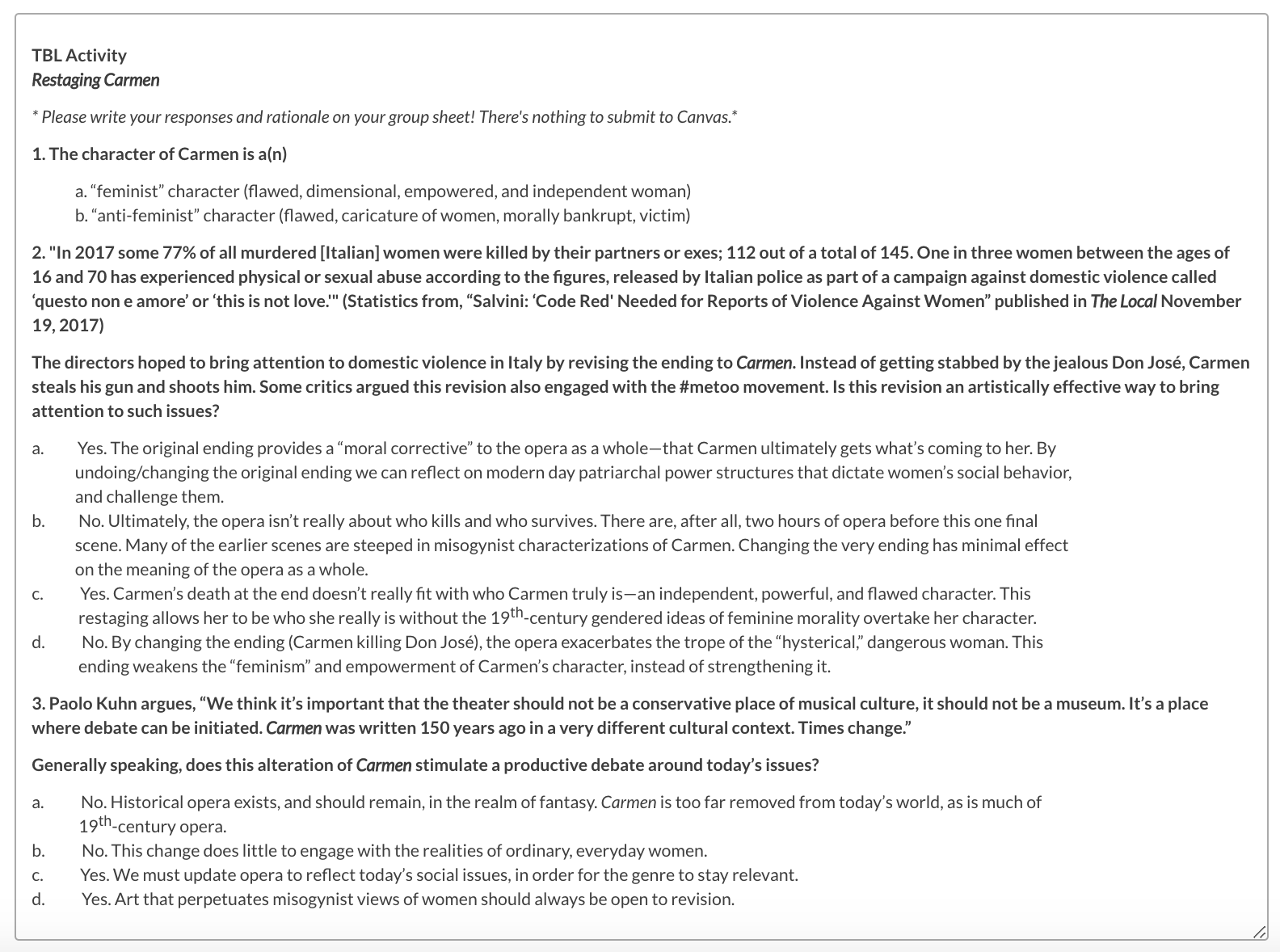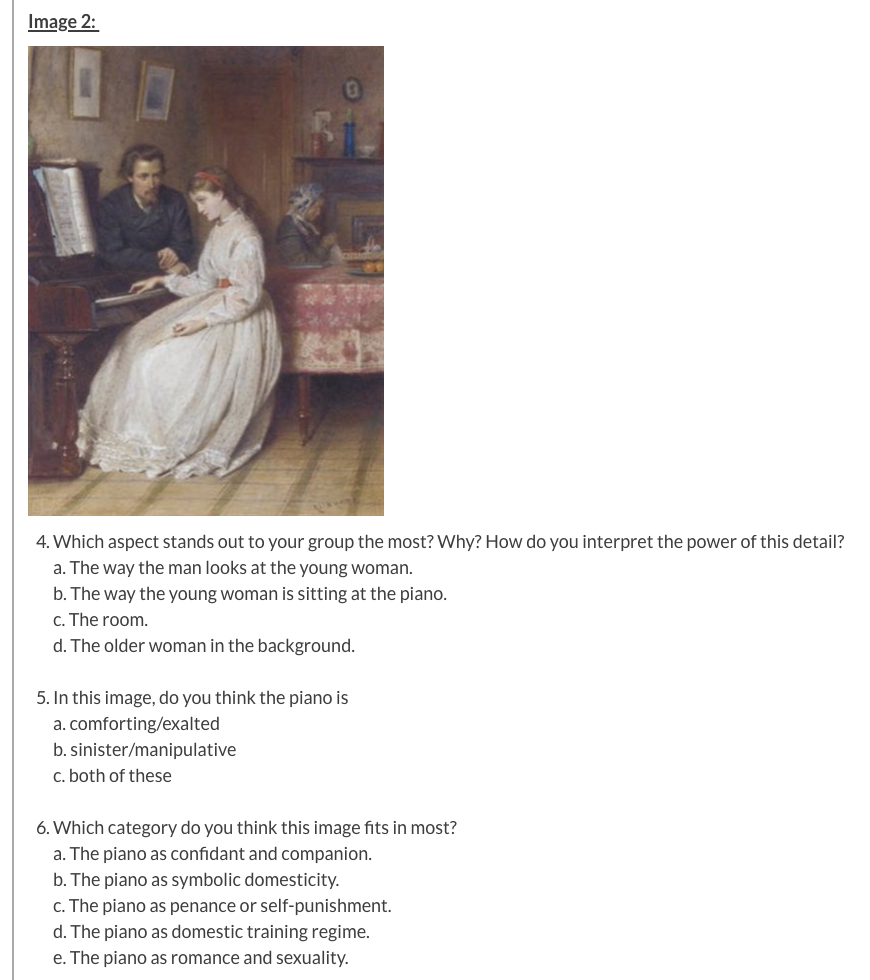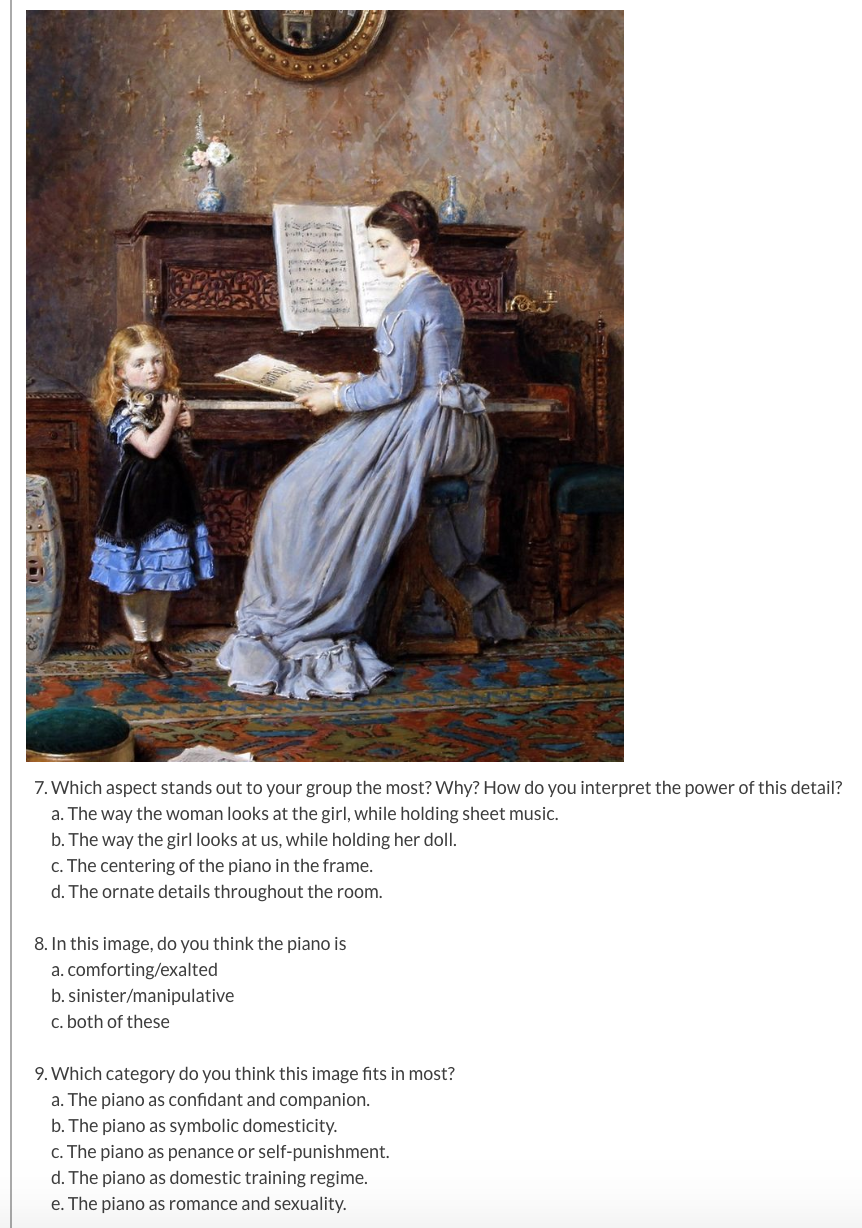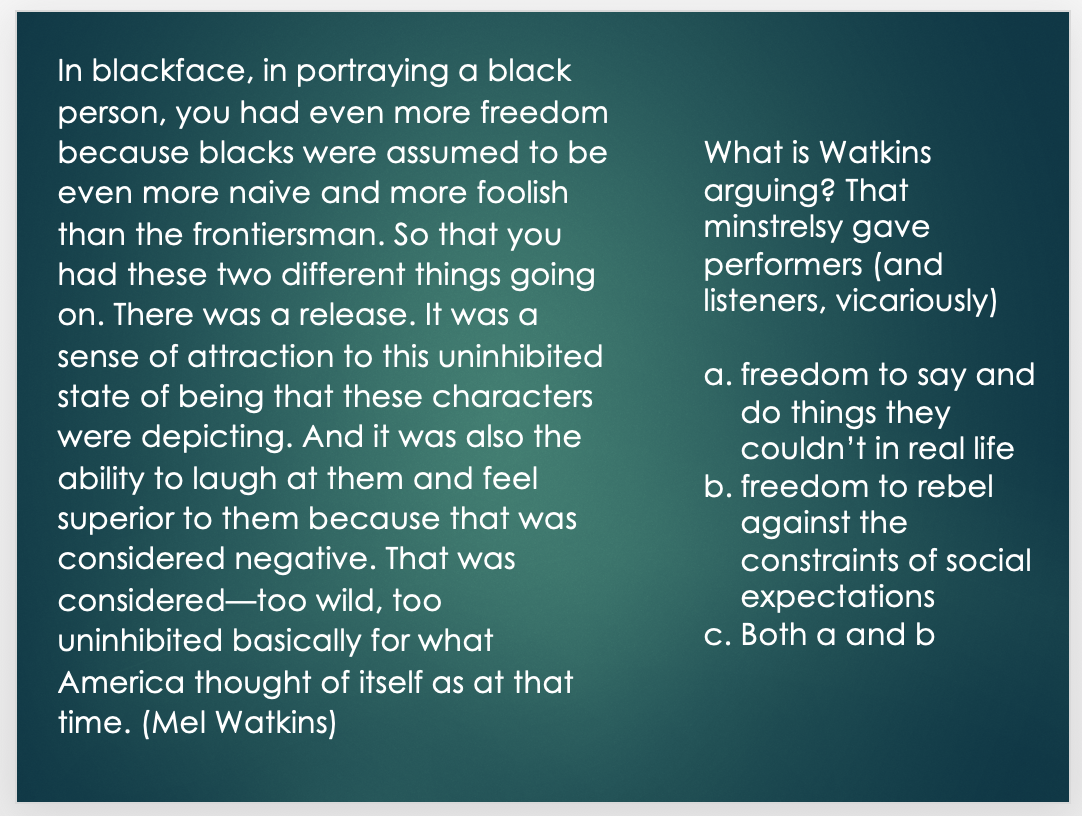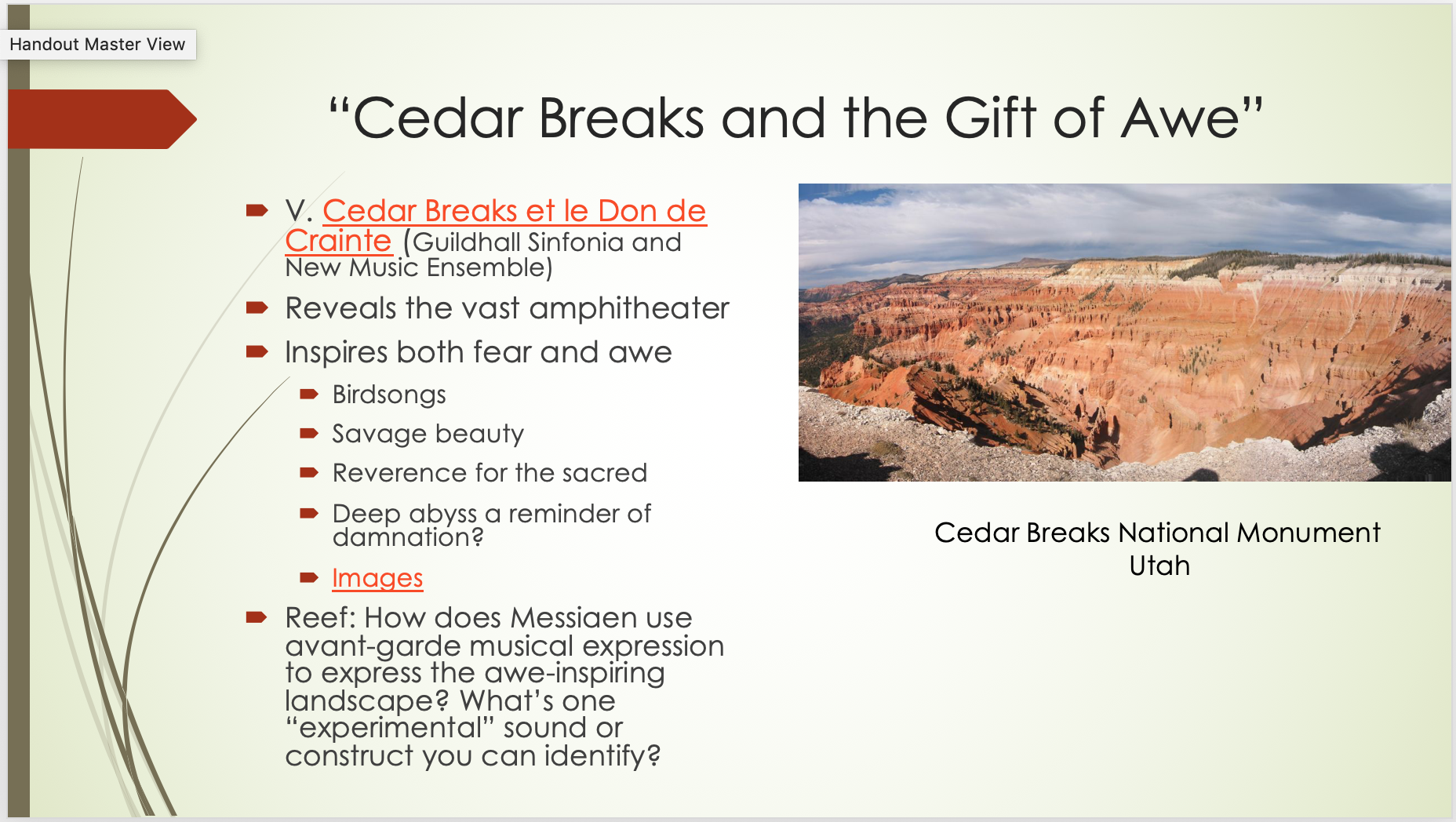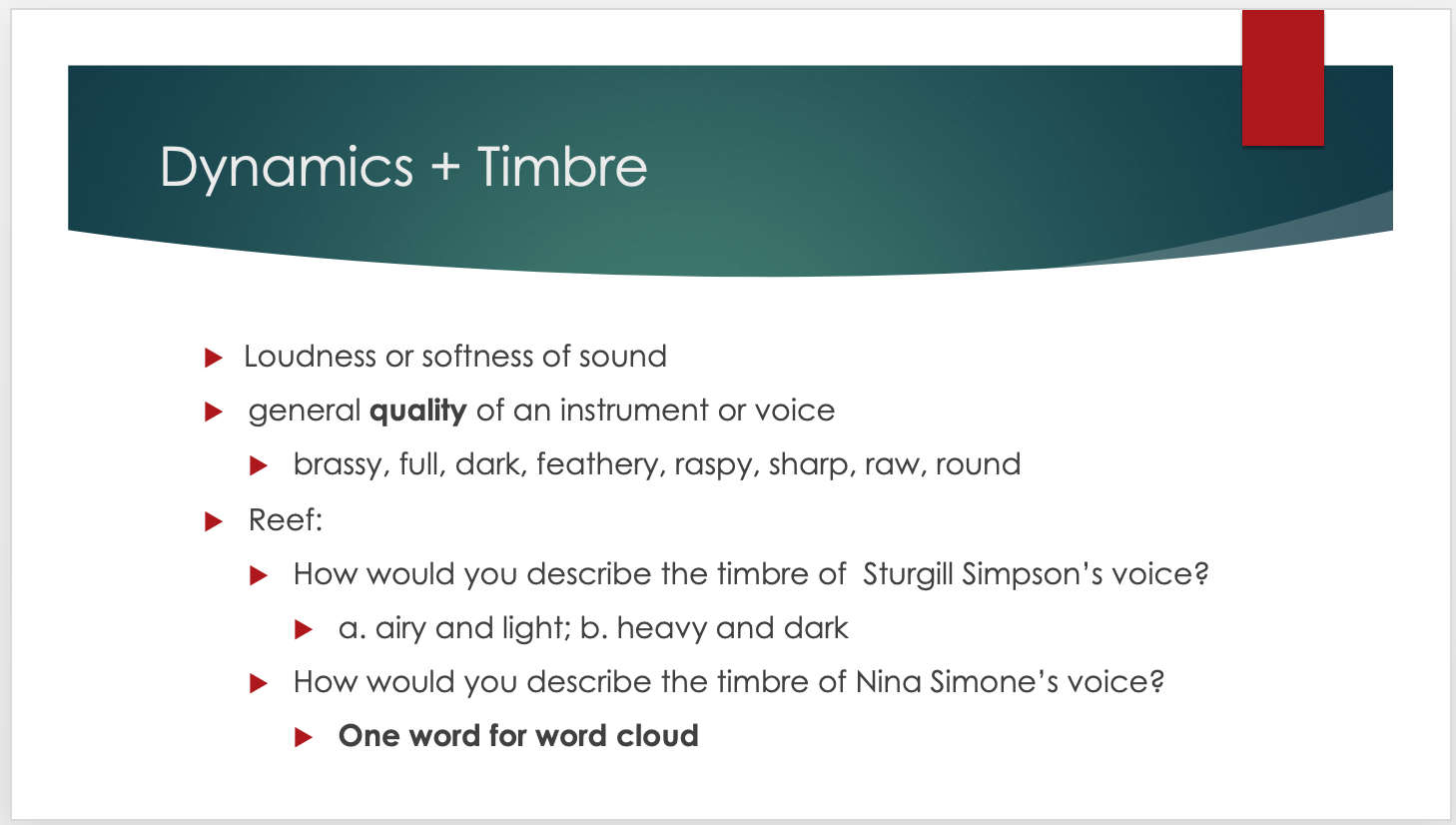Teaching Methods & Strategies
I am committed to pedagogical methods and strategies that instigate active-learning and personal engagement with the subject matter. Since I teach non-majors in the UNT Creative Arts Core, I focus most students’ ability to satisfy the Core Learning Objectives (Critical Thinking; Communication; Social Responsibility; and Teamwork), as opposed to content mastery. Through carefully created Canvas Modules, personal engagement with the subject matter, diverse content, and Team-Based Learning (TBL) activities, I curate a learning experience that encourages students to reflect on the power of music and its historical and contemporary frameworks.
Canvas Modules
I organize my course in logical ways. For each week of study, students have access to a Canvas module that includes objectives, activities, and assignments. This organization demystifies and explains the goals of the course for non-majors, and connects each week’s learning objectives to specific materials and assignments. I also use Canvas to guide my online students through difficult readings, organize group projects, and provide details on assignments and expectations. Examples of Canvas modules organization are below.
Personal Engagement
Deep, personal interaction with the subject matter is crucial in non-major teaching. I rely on several assignments that ask students to connect their own musical identities with our classroom materials. In 19th-Century Music and 20th-Century Music, students complete regular Music and Media Reports. These reports ask students to reflect on the social and cultural import of recent musical examples that resonate with the larger course concerns. From analyzing aspects of musical virtuosity, politics in music, gendered identities, and the avant-garde, students seek out modern-day examples and work to make sense of them on their own terms.
Not only am I concerned with personal, interdisciplinary interactions with music, but I am committed to course content that reflects the diversity of the student body at UNT. My courses include a wide-range of musical voices and experiences. While at times, I focus on the traditional narratives of the composer, I also incorporate perspectives from performers, listeners, amateurs, and critics. I often organize my classes not by chronology, but through more flexible, umbrella categories that encourage active engagement with competing historical narratives. Subsequently, many of my course materials focus on interrogating the complex power structures that dominate our understanding of musical history.
Creative assignments in each class—podcasts, remixes, concept music, and recomposing—all ask students to engage with music as creators and curators. A four-week unit in 19th-Century Music on American musical identity through the lens of minstrel show gives students an historical context for the deep-seated racist stereotypes that still circulate today. Following this in-depth discussion of the narratives circulating around these shows, students complete a Reclamation Project. This group assignment is designed for students to reflect on this disturbing history and reclaim or restructure the narratives from an historical or contemporary perspective.
Interactive Lectures & Team-Based Learning
Because I teach large, non-major classes, I am also deeply invested student engagement - I want students to have fun in my classes! In other words, I am less concerned with content mastery and more with critical thinking. Throughout all of my classes, I rely on a combination of interactive lecture and Team-Based Learning Activities. Incorporating small pair-share activities, iClicker Reef questions, and primary and secondary source analysis, I create lectures that are engaging and interactive. Team-Based Learning is a pedagogical method that I recently began employing, after relying on Problem-Based Learning for most of my career. Team-Based Learning has proven incredibly effective, because it fosters a more cohesive team environment, guides non-major students more carefully through content, and stimulates more interaction. For introductory, non-major courses, this method works especially well. Examples of several Team-Based Learning activities and interactive slides from selected lectures are below.


